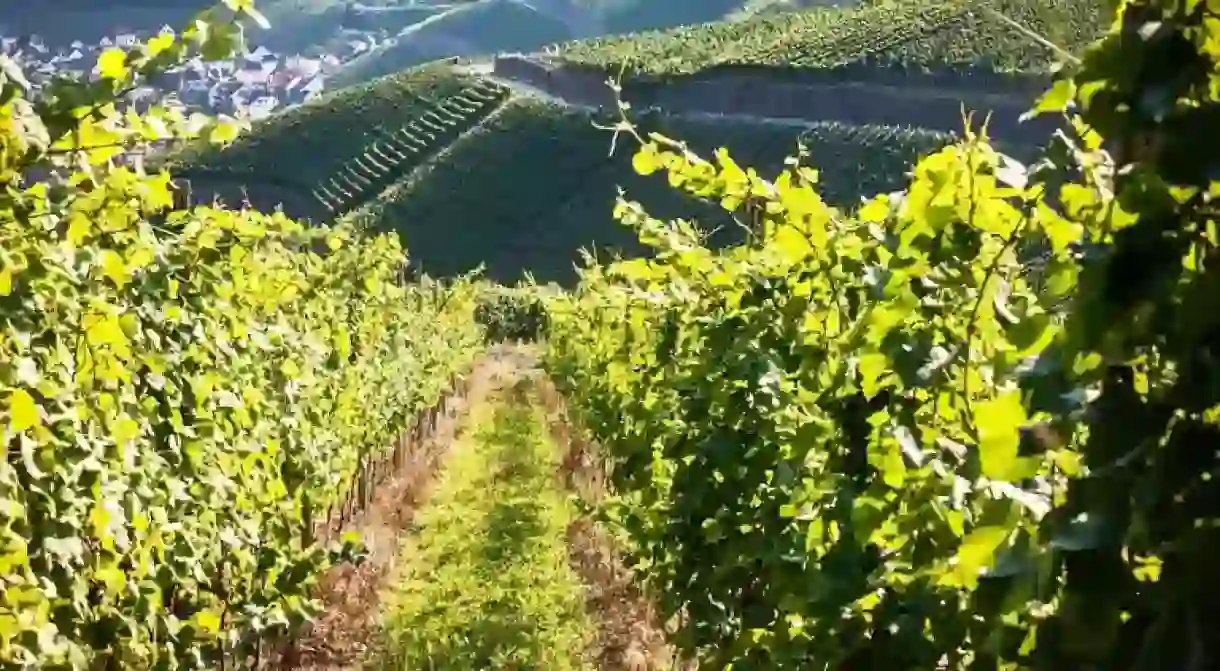The Best Vineyards to Visit in Germany

If you are a wine connoisseur traveling in Germany, you can look forward to tasting amazing wine across 13 official wine-making regions in Germany. We have rounded up the best vineyards across the country, where you can head to for beautiful views, delicious cuisines and, most importantly, superlative wine.
Bernkastel-Kues
The Mosel-Saar-Ruwer region is the most well-known wine region in Germany, and the steep vineyards of Bernkastel-Kues are a pride of the Mosel Valley. These vineyards are among the oldest and most famous in Germany and boast over 100 wineries, earning the town the title of The City of Vine and Wine. Though there are many excellent vineyards in Bernkastel-Kues, the Bernkasteler Doctor has achieved legendary status. It is known for producing the most noble Riesling and is also the most expensive vineyard in the country.

Mittelhaardt
Mittelhaardt is the northern part of the Palatinate wine-growing region of Germany. It sprawls from Neustadtover Deidesheim, Bad Dürkheim and the Leiningerland right until Zellertal. This area is amazingly picturesque and known for its rich wine-making tradition going back to the Roman era, 2000 years ago. Favorable soil, a warm climate and the skill of wine-growers contribute to the production of superior-quality wine that is opined by famous wine connoisseurs to be among the finest in the world. This area boasts hundreds of vineyards, and the emphasis is on Riesling of exceptional finesse.
Radebeul
Radebeul is the undisputed queen of Saxony’s wine region and has a history of viticulture dating back over 700 years. Wine enthusiasts from all corners of the globe come to Radebeul to tour its lush vineyards and sip delicious local wines. Wackerbarth Castle owns the most famous vineyard and wine-making facilities in Radebeul, drawing tourists like magnets with its wine-tasting sessions and vineyard tours. On the other hand, Hoflössnitz Wine Estate is often referred to as the cradle of Saxon viticulture, which once served the royals and set the standard for many other vineyards in the region.

Rüdesheim
Rüdesheim vineyards are the key producers of wine in Germany’s famed Rheingau wine region. When the Romans settled in Rüdesheim in the 1st century, they brought wine-making with them, and this skill has been sharpened and passed on through the centuries. Rüdesheim has several well-known vineyards, seven of which are classified as Grosse Lage (Germany’s very best vineyard sites); namely Rosengarten, Kirchenpfad, Bischofsberg, Berg Rottland, Berg Roseneck, Berg Kaisersteinfels and Berg Schlossberg. An estimated three million wine enthusiasts visit Rüdesheim every year and are regularly left searching for superlatives to describe the fine local wines.

Trier
Trier is considered to be the cradle of German wine culture and specializes in Riesling of great quality. It is among the largest wine-growers in the Mosel-Saar-Ruwer region and it is believed that the very first vines in the Mosel were planted in Trier in the 2nd century. For a deeper understanding of the wine production process, the work of a vintner, and the viticulture history of Trier, you might want to consider signing up for the Trier Wine Culture Trail tour.
Ahr Valley
The stretch between Ahrweiler and Blankenheim along the banks of the Ahr River is known for its excellent red wine, especially Pinot Noir. This area has been producing red wine for over 2000 years. The best-known vineyards in this region include Meyer-Näkel, Peter Kriechel, Jean Stodden, Burggarten and Nelles, among others.

Dresden
On the southern outskirts of Dresden along the Elbe River, you will find vined hillsides shaped by a wine-growing tradition dating back centuries. This stretch is an important part of Saxony’s Wine Trail and known for grapes of delightful ripeness. The most popular vineyard along this route is Schloss Proschwitz, around 40 minutes out of Dresden.













